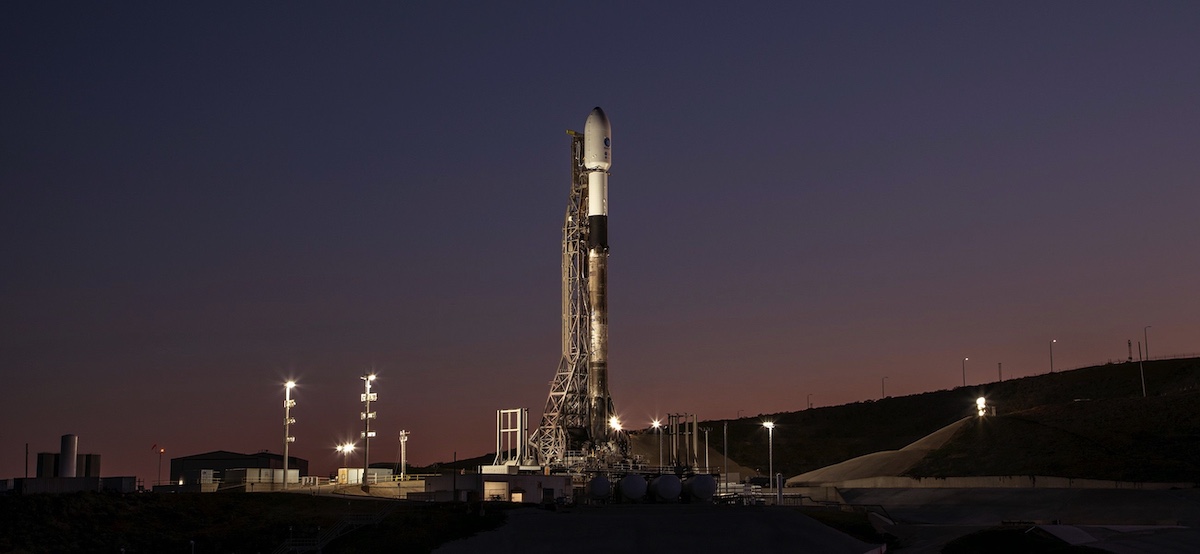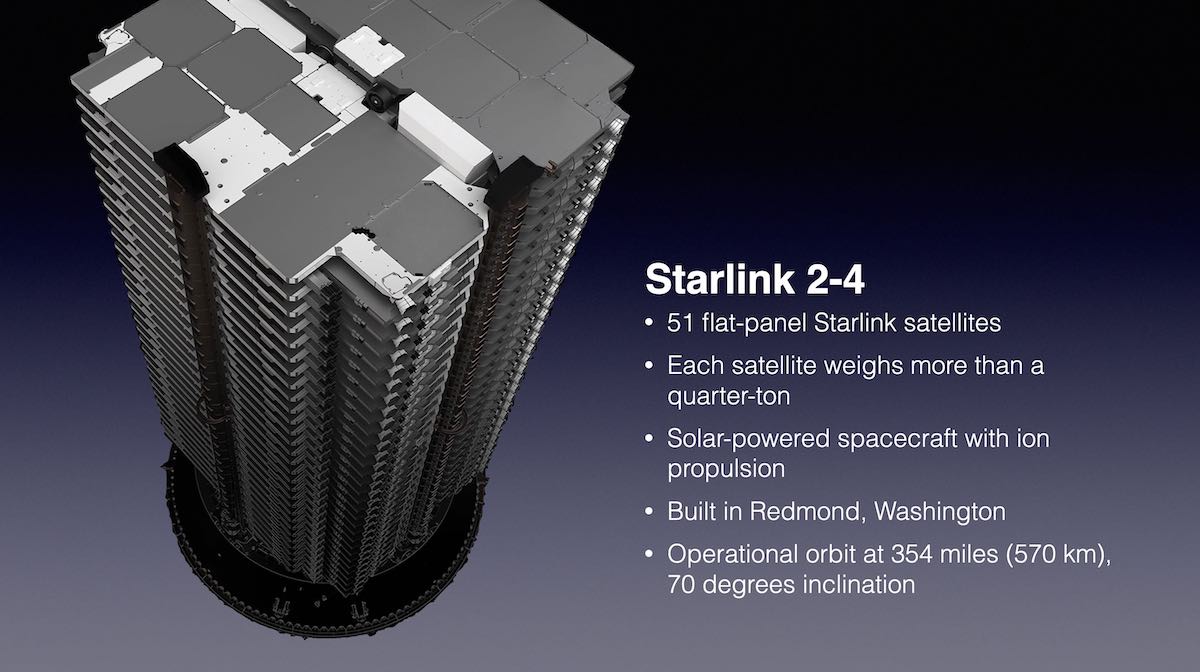Space News & Blog Articles
SpaceX’s first Starlink launch of 2023 set to fly from California
 A SpaceX Falcon 9 rocket stands on its launch pad at Vandenberg Space Force Base, California, in this file photo before a launch in December. Credit: SpaceX
A SpaceX Falcon 9 rocket stands on its launch pad at Vandenberg Space Force Base, California, in this file photo before a launch in December. Credit: SpaceX
SpaceX’s first launch of Starlink internet satellites this year is set to blast off from California’s Central Coast Monday night, but high winds and storms could stand in the way of the Falcon 9 rocket lifting off with 51 new broadband relay stations.
The 229-foot-tall (70-meter) Falcon 9 rocket is scheduled to fire off its launching pad at Vandenberg Space Force Base at 8:15 p.m. PST (11:15 p.m. EST; 0415 GMT) to kick off SpaceX’s first Starlink mission of 2023. It’s also the first launch of the year from Vandenberg.
The 51 Starlink internet satellites on-board the rocket will bring the total number of Starlink spacecraft launched to 3,717.
But the launch weather forecast is iffy, at best. There’s just a 30% chance of acceptable conditions for liftoff of the Falcon 9 rocket Monday night, with high winds and storms bringing flooding rains to California. SpaceX says it has a backup launch opportunity at 8:02 p.m. PST Tuesday (11:02 p.m. EST; 0402 GMT).
The mission will debut a brand new Falcon 9 booster, designated B1075, making its first flight to space. The 15-story-tall first stage booster will fire about two-and-a-half minutes before separating to begin a descent toward SpaceX’s drone ship “Just Read the Instructions” in the Pacific Ocean a few hundred miles downrange from Vandenberg.
The Falcon 9 will head southeast from the California spaceport, targeting an orbit inclined 70 degrees to the equator. The mission will aim to deploy the 51 Starlink satellites into Group 2 of the constellation.
SpaceX’s first-generation Starlink fleet is spread out into five groups, or orbital shells, between 335 miles and 354 miles in altitude. The first-generation Starlink shells are inclined at different angles to the equator, with some satellites orbiting between 53 degrees north and south latitude, and others in orbits flying from pole-to-pole.
The Starlink satellites on this launch, named Starlink 2-4, will fly in an orbit inclined 70 degrees to the equator. Its the second launch into Group 2, following a mission in September 2021 that also carried 51 Starlink spacecraft into orbit.
SpaceX began launching satellites into its second-generation Starlink constellation, called Gen2, last month. The Starlink 2-4 mission will continue filling out the first-generation Starlink fleet.
 The Starlink 2-4 mission will carry 51 more Starlink internet satellites into orbit. Credit: Spaceflight Now
The Starlink 2-4 mission will carry 51 more Starlink internet satellites into orbit. Credit: Spaceflight Now
The Federal Communications Commission granted SpaceX approval Dec. 1 to launch up to 7,500 of its planned 29,988-spacecraft Starlink Gen2 constellation. The regulatory agency deferred a decision on the remaining satellites SpaceX proposed for Gen2.
The FCC previously authorized SpaceX to launch and operate roughly 4,400 first-generation Ka-band and Ku-band Starlink spacecraft that SpaceX has been launching since 2019. SpaceX also received regulatory approval to launch more than 7,500 Starlink satellites operating in a different V-band frequency.
The Gen2 satellites could improve Starlink coverage over lower latitude regions, and help alleviate pressure on the network from growing consumer uptake. SpaceX said last month the network now has more than 1 million active subscribers. The Starlink spacecraft beam broadband internet signals to consumers around the world, connectivity that is now available on all seven continents with testing underway at a research station in Antarctica.
The launch from Vandenberg Monday night, assuming it flies, is set to occur just 35 minutes before SpaceX is scheduled to send a different Falcon 9 rocket into orbit from Cape Canaveral Space Force Station, Florida. That launch, set for 11:50 p.m. EST (0450 GMT), will carry 40 internet satellites into orbit for OneWeb, a rival of the Starlink network in the broadband market.
If both launches take off as scheduled, it would mark the shortest span between two SpaceX missions to date.
This email address is being protected from spambots. You need JavaScript enabled to view it. the author.
Follow Stephen Clark on Twitter: @StephenClark1.
When you subscribe to the SpaceZE News Feed, we will send you an e-mail when there are new updates on the site so you wouldn't miss them.

